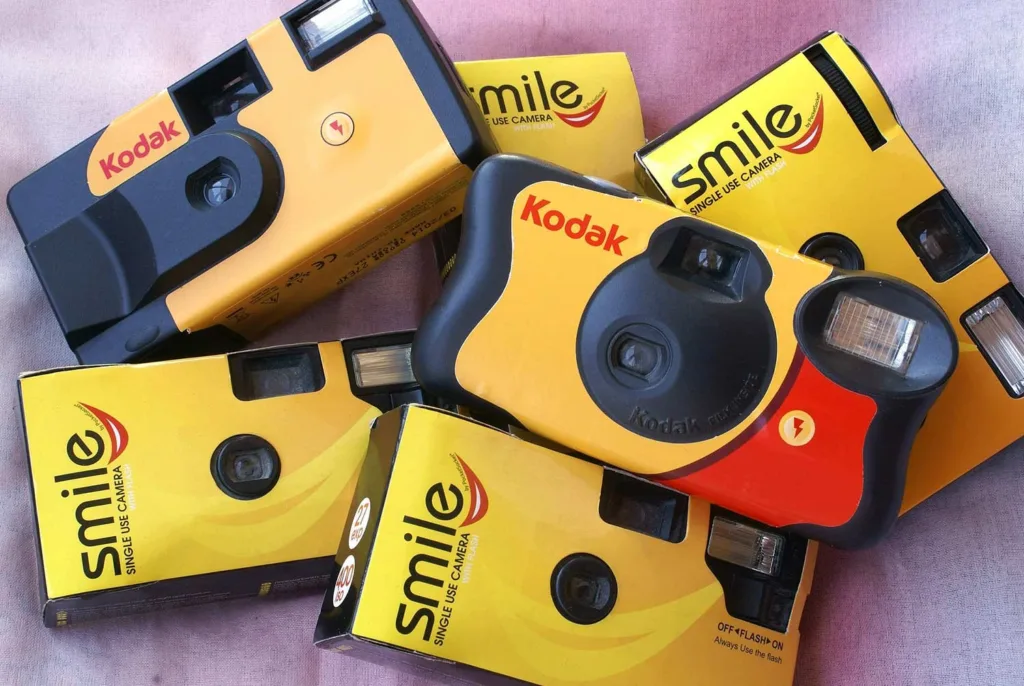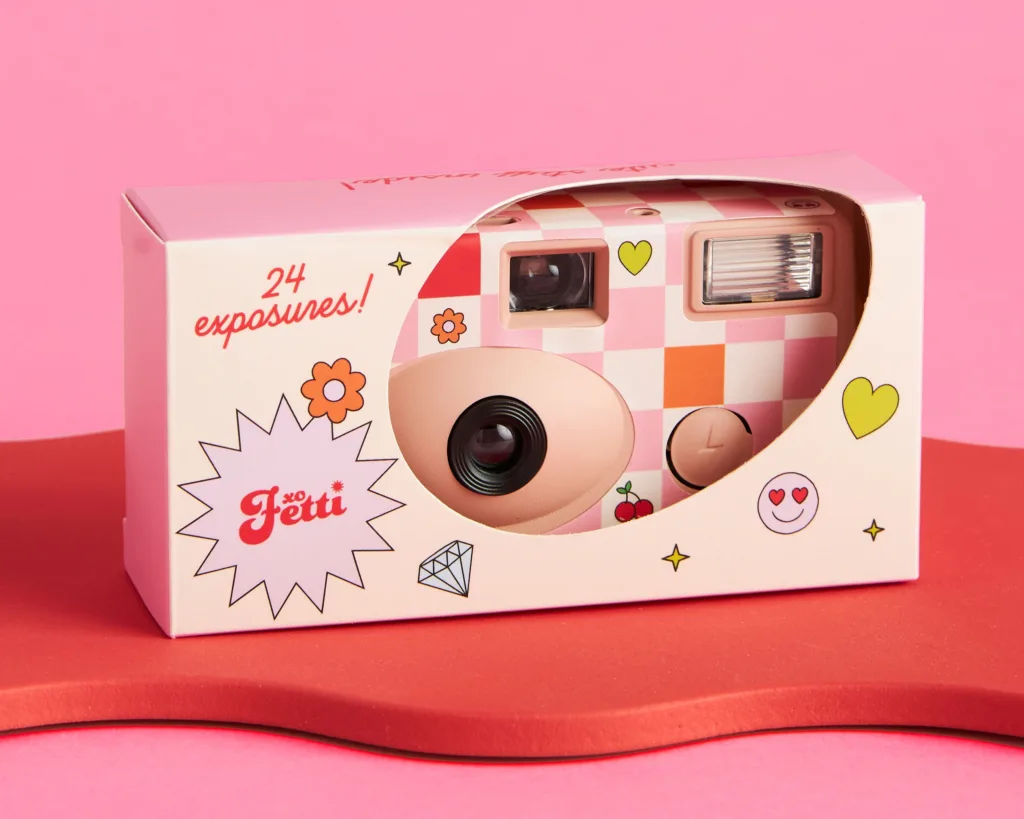Disposable cameras have been around for decades and have been a popular choice for those who want to take pictures without the hassle of carrying around a bulky camera. These cameras are small, lightweight, and easy to use. They are also affordable, making them an excellent option for those on a tight budget.
Disposable cameras work by using a film that is pre-loaded into the camera. The film is typically 35mm, which is the most common size for film cameras. The camera has a fixed lens, meaning that it cannot be adjusted for zoom or focus. This makes them an excellent option for those who want to take quick snapshots without worrying about the technical aspects of photography.
The camera has a simple viewfinder that allows the user to see what they are taking a picture of. Once the picture is taken, the film is advanced to the next exposure, and the camera is ready to take another picture. Most disposable cameras come with a flash, which is useful for taking pictures in low light conditions.
When the film is fully exposed, the camera is taken to a photo lab for processing. The film is removed from the camera and developed, which involves exposing the film to chemicals that bring out the images. Once the film is developed, the images can be printed onto paper, which can then be shared, framed, or placed in albums.
Disposable cameras are an excellent option for those who want to take pictures without the hassle of carrying around a bulky camera. They are affordable, easy to use, and produce good quality images. They are also a great option for those who want to experiment with film photography without investing in an expensive camera.
Disposable cameras are a simple and affordable way to take pictures. They work by using pre-loaded film and have a fixed lens, making them an excellent option for those who want to take quick snapshots without worrying about the technical aspects of photography. If you’re looking for a fun and easy way to take pictures, considr using a disposable camera.
Developing Pictures from a Disposable Camera
Disposable cameras are a great option for capturing memories when you don’t want to lug around an expensive camera or worry about losing it. However, once you’ve used up all the film, you may be wondering how to get the pictures off the camera and into your hands.
The process of geting pictures from a disposable camera is relatively simple. Here’s what you need to do:
1. Locate a photo lab or retailer that offers film processing services. Many drugstores, grocery stores, and big-box retailers like CVS, Walgreens, and Walmart offer this service.
2. Once you’ve found a suitable location, take your disposable camera to the store and drop it off. You can expect to pay a fee for film processing and printing, which varies depending on the retailer and the number of pictures you have.
3. The lab will then process the film, which involves developing the negatives and creating prints of the pictures. This usually takes a few hours to a few days, depending on the retailer and the volume of film they are processing.
4. Once the film has been processed, you can either pick up your prints in-store or have them mailed to you. If you prefer, you can also opt to receive digital copies of your pictures on a CD or USB drive.
5. you can enjoy your pictures! Display them in frames, share them with friends and family, or create a photo album to preserve your memories.
Getting pictures from a disposable camera involves taking the camera to a retailer that offers film processing services, paying a fee for processing and printing, waiting for the film to be developed, and then picking up or receiving your prints. With these steps, you’ll be able to enjoy your memories for years to come.

Can Disposable Cameras Be Used More Than Once?
Disposable cameras, also known as single-use cameras, are designed to be used only once. These cameras are typically equipped with a pre-loaded film and a simple box-like design that allows for easy use witout requiring any technical expertise. Once the film is used up, the entire camera is disposed of, hence the name “disposable.”
The reason behind the disposable nature of these cameras is that they are intended for situations where the cost and complexity of traditional film cameras or digital cameras would be inconvenient or impractical. For example, disposable cameras are often used for events like weddings, parties, or other occasions where many people may want to take photos but not everyone has a camera.
Disposable cameras typically have a fixed-focus lens and a limited range of settings. Some models may have an integrated flash unit, which can be useful in low-light situations. There are even waterproof versions available for use underwater.
Disposable cameras can only be used once due to their design and the purpose they serve. They are a convenient and cost-effective option for capturing memories in situations where a more sophisticated camera may not be practical or necessary.
Length of Film in a Disposable Camera
A disposable camera typically contains a roll of film that has a shelf life of arund two years from the date of manufacture. However, the actual lifespan of the film depends on various factors such as storage conditions, exposure to light, and humidity levels.
Once you have taken pictures with your disposable camera, the exposed film needs to be developed within a specific time frame to avoid deterioration in image quality. Most films require development within six months of exposure, after which time the images may start to break down and lose their sharpness and color accuracy.
It’s essential to store your disposable camera in a cool, dry place away from direct sunlight and extreme temperatures to preserve the quality of the film for as long as possible. If you have an exposed disposable camera that you haven’t developed yet, be sure to do so as soon as possible to ensure the best results.
The lifespan of the film in a disposable camera is typically around two years, but the quality of the images may start to deteriorate after six months of exposure if not developed promptly.
Number of Pictures in a Disposable Camera
Disposable cameras are a popular choice for people who want to capture memories without investing in an expensive camera. These cameras are designed to be used once and then thrown away, making them a convenient option for travel, parties, and othr events where you want to take pictures without worrying about damaging or losing an expensive camera.
One of the most commonly asked questions about disposable cameras is how many pictures you can take with them. The answer to this question depends on the specific camera you are using, as different models have different capacities.
The standard number of exposures for a disposable camera is 27, which means you can take 27 pictures before the camera is full. However, some disposable cameras come with more exposures, such as 36, giving you more opportunities to capture memories.
It is important to note that once you have used all of the exposures on a disposable camera, you will need to have the film developed before you can see your pictures. This typically involves taking the camera to a photo lab or using a mail-in service to have the film processed and printed.
Disposable cameras typically have a capacity of 27 exposures, but some models may have more. It’s important to keep in mind that once you have used all of the exposures, you will need to have the film developed to see your pictures.

Conclusion
Disposable cameras are a convenient and affordable option for capturing memories. With their simple design and fixed-focus lenses, they are easy to use for anyone, no matter their level of photography experience. Plus, the waterproof versions make them ideal for capturing underwater moments. However, it is important to note that exposed films should be developed within six months to ensure the quality of the images. disposable cameras are a great option for those looking for a quick and easy way to capture memories without breaking the bank.
